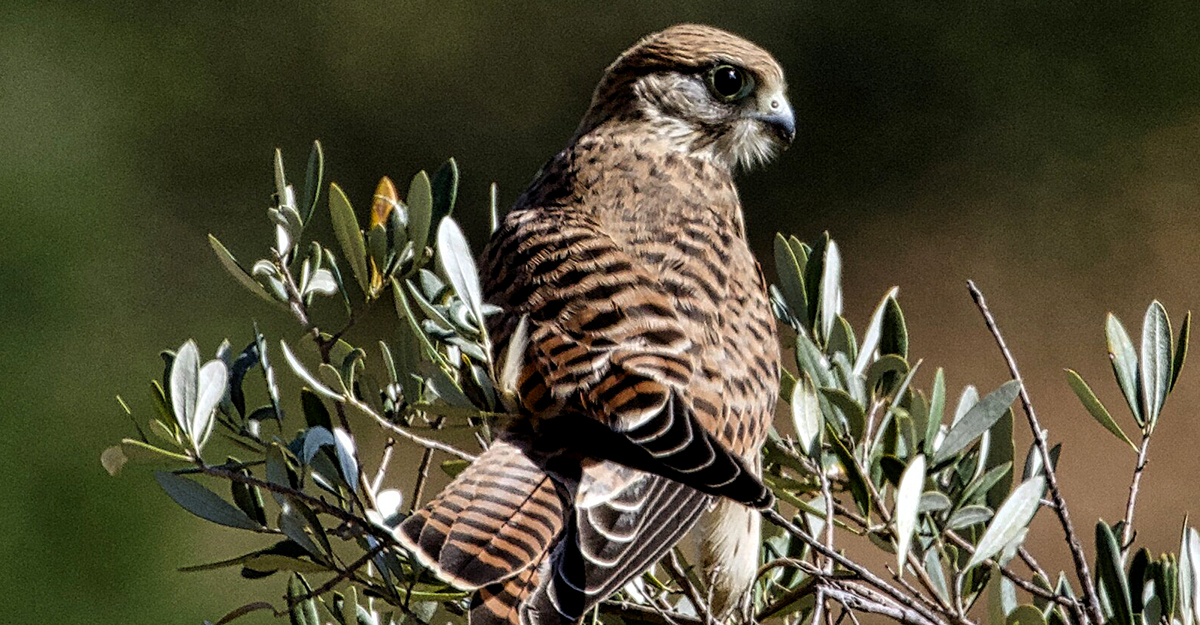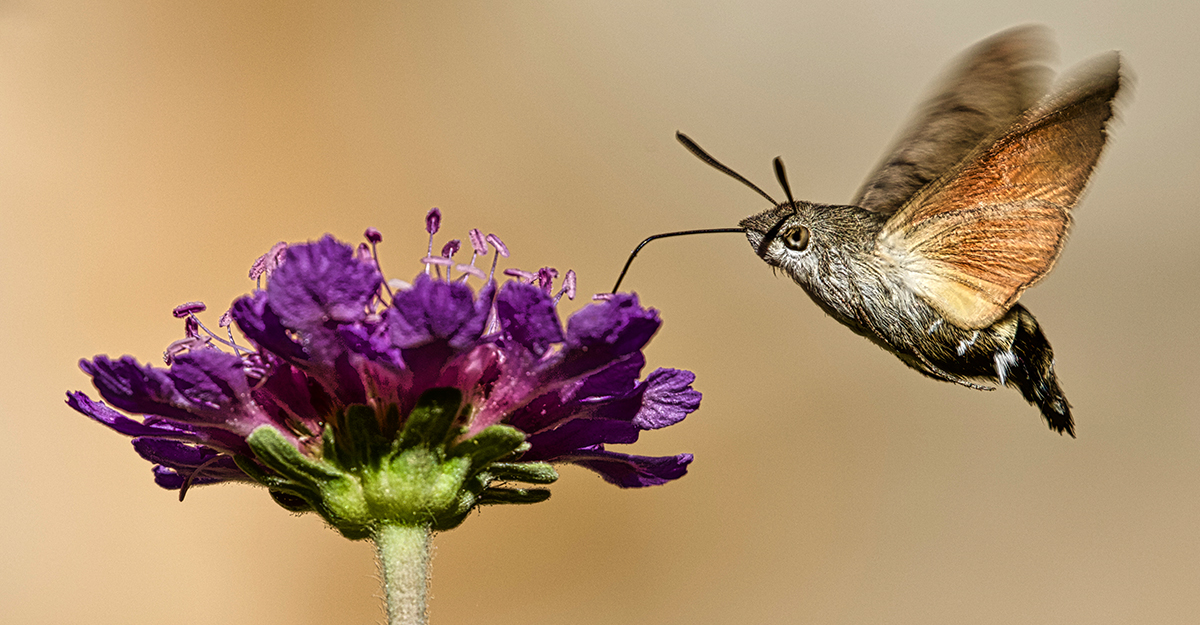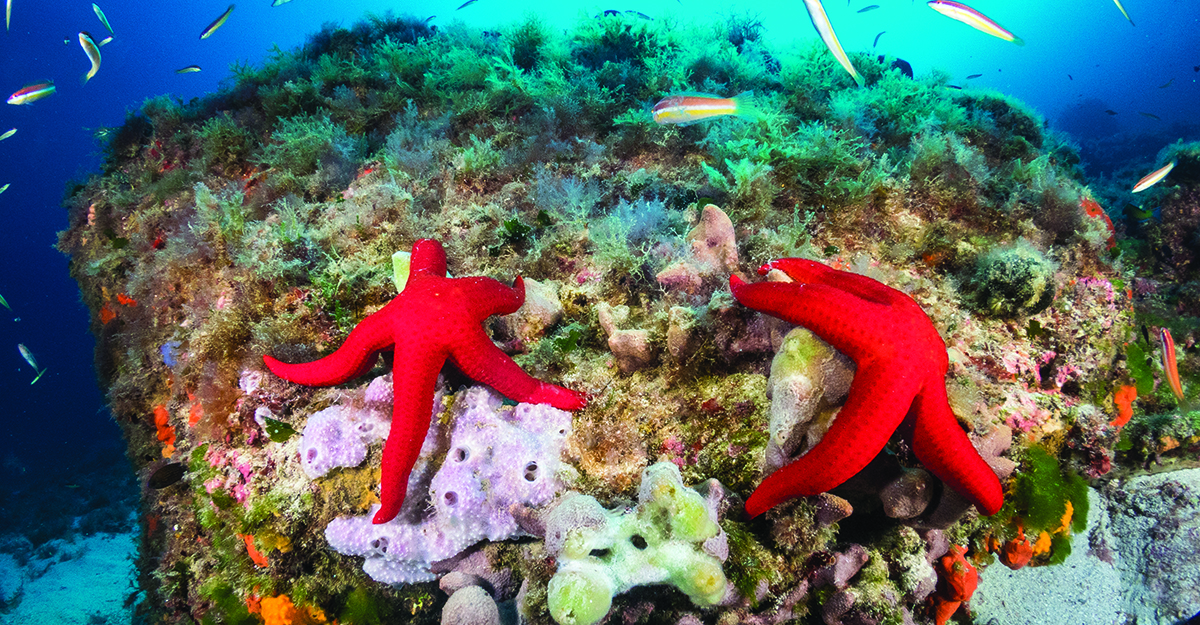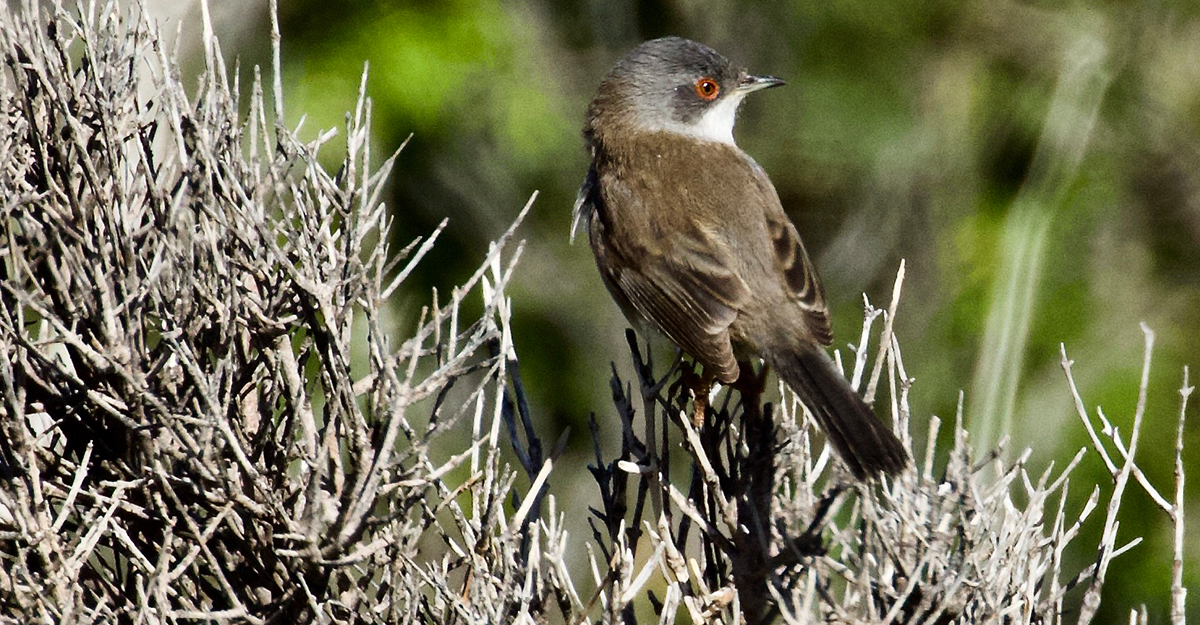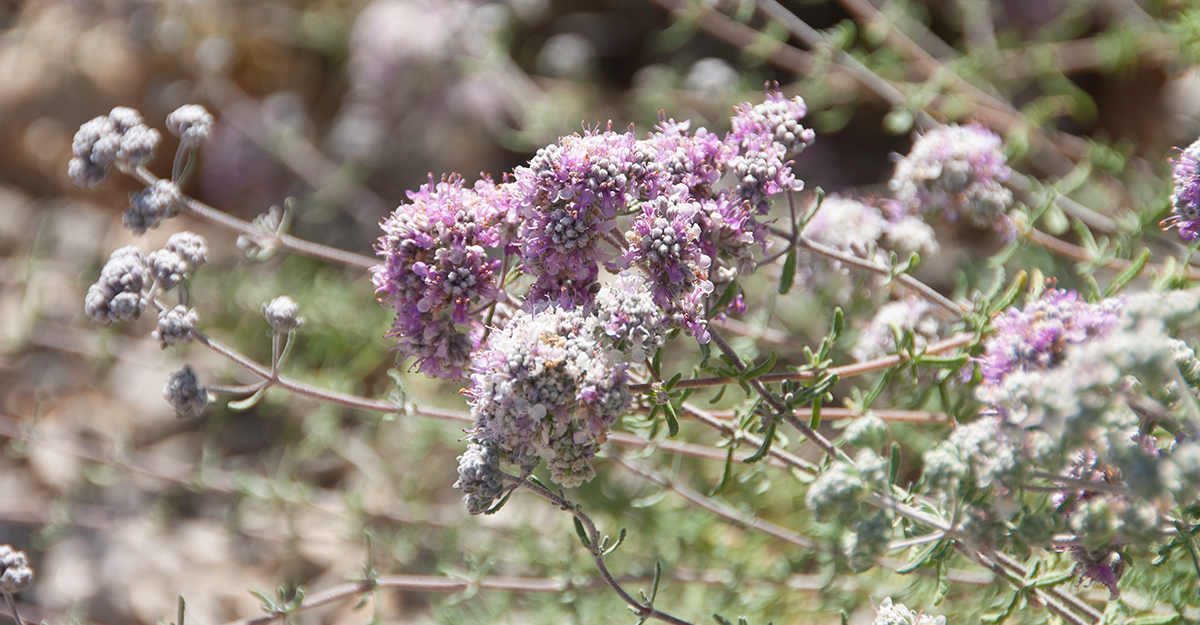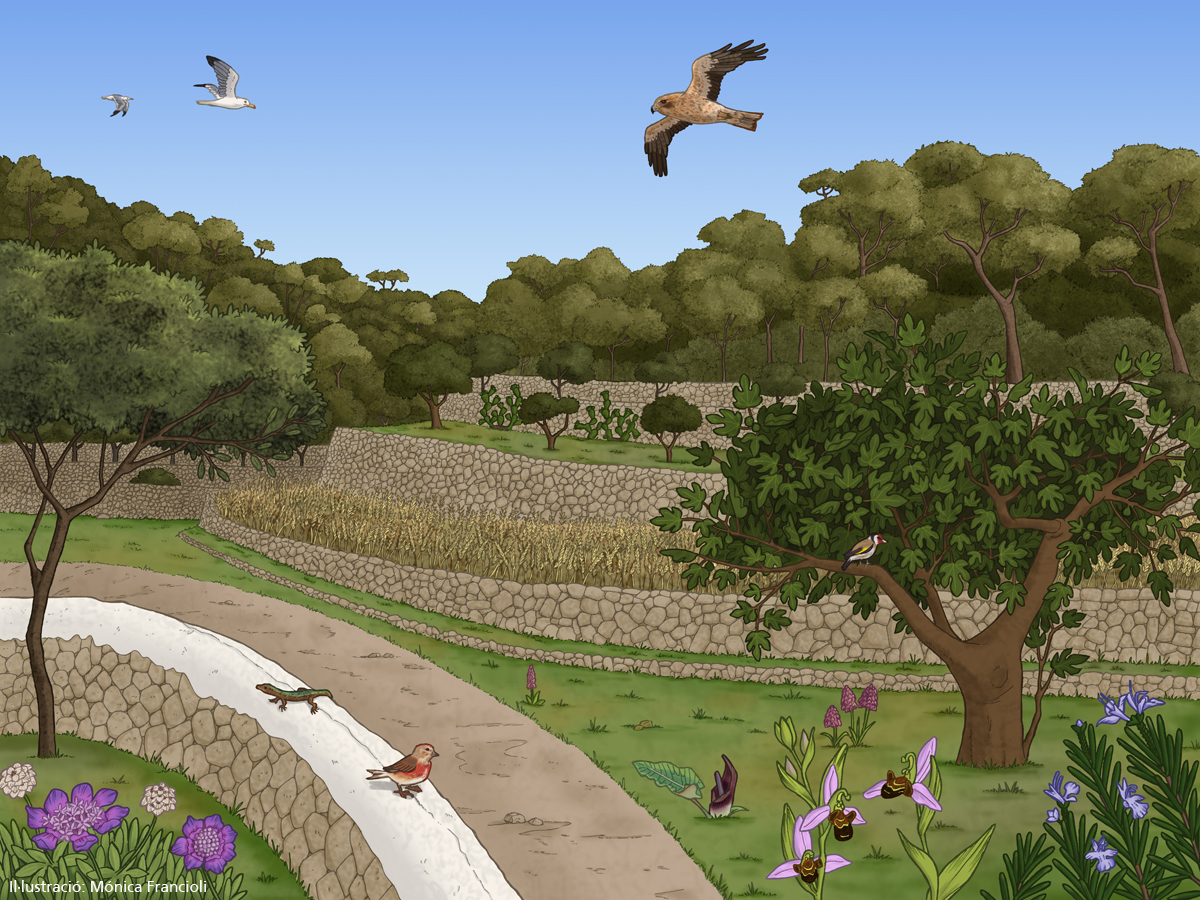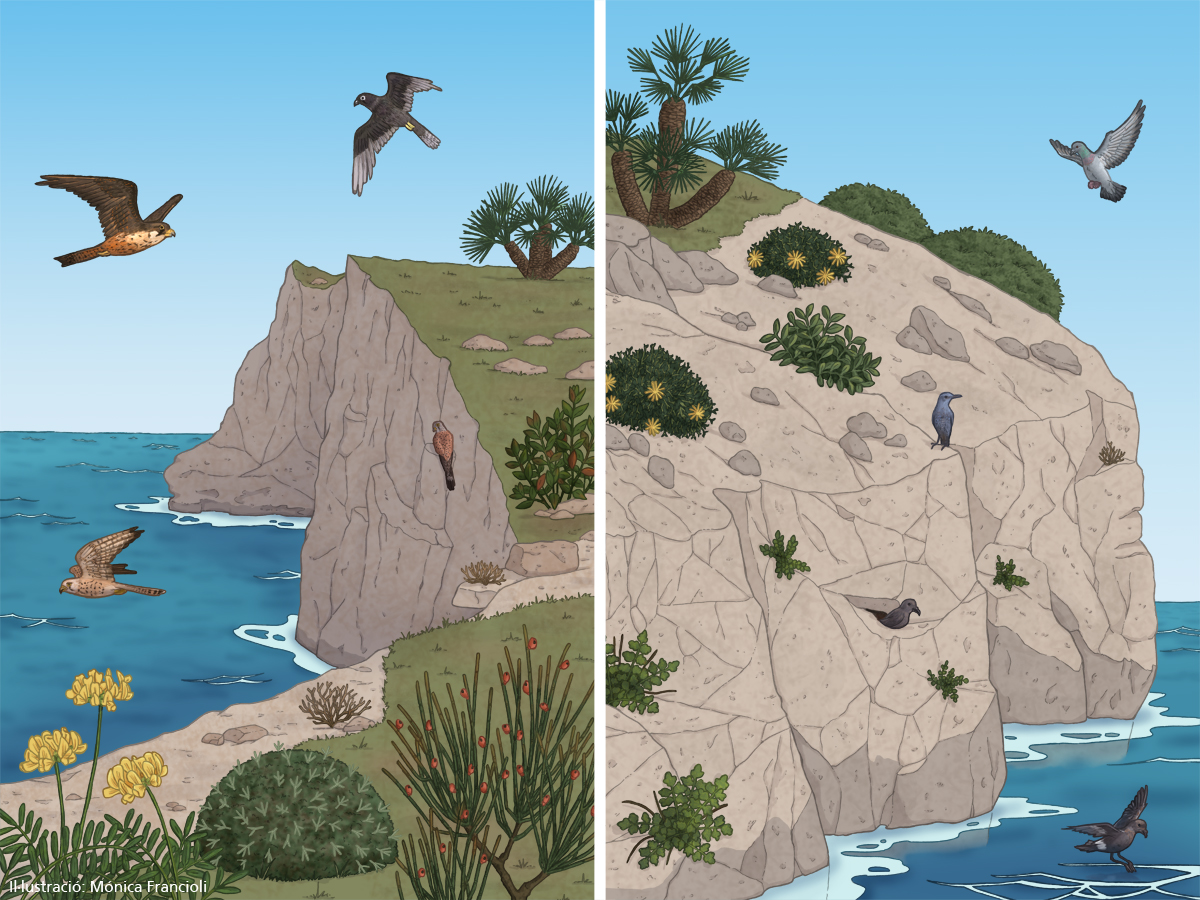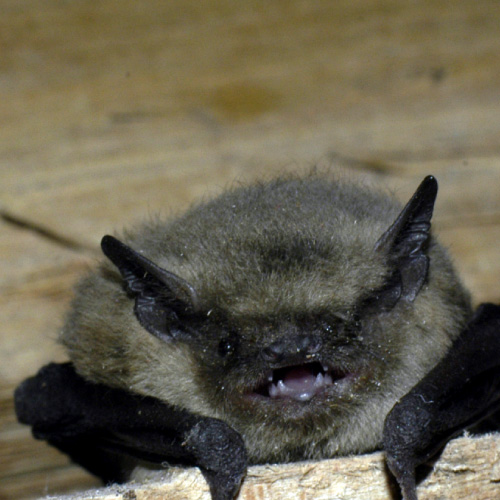Farmlands
The farmlands, with a minimal area in sa Dragonera, are a remnant of the first settlement and the need to cultivate in order to survive due to the shortage of food. It is a landscape and an anthropised environment in which, starting from a modest exploitation of rainfed cereals (oats and barley), fruit trees have been introduced, the most characteristic of which is the fig tree, but there are also almond trees.
At the edges of the paths between these crops are orchids such as the Pyramidal orchid (Anacamptis pyramidalis), the Bee orchid (Ophyris apifera) and the Giant orchid (Himantoglossum robertianum). They bloom with striking petals in the spring and are very easy to find.
The European goldfinch (Carduelis carduelis), unmistakable with its red face, and the Common linnet (Carduelis cannabina), highly appreciated by the country people for its song, fly over these areas in search of seeds.
Garden of Cala Lledó
History has also left a botanical imprint. It can be found in the botanical garden of Cala Lledó, which contains the most representative plants of the different habitats present here: the coastline, forests and scrubland, or the cliffs. An example of what can be found in the garden is the Scabiosa cretica, a species that is very difficult to find due to being located in the most remote places among the rocks.
Both on the crops and in the garden, you can see the bird of prey called the Booted eagle (Hieraaetus pennatus). Its ochre plumage and dark wings are very distinctive.
Shady cliffs of the north slope
The northern slope of sa Dragonera is geomorphologically configured by an impressive cliff of 300 metres: “evidence of an ancient belonging to the Sierra de Tramuntana”. This rugged and inhospitable relief is precisely a fundamental ecosystem for both flora and fauna biodiversity.
Adapted to this sombre calcareous landscape are very attractive species such as the Spiny germander balearicum (Teucrium balearicum), at the feet of the rocks, and the Rocky violet (Hippocrepis balearica) and Joint pine (Ephedra fragilis), in the fissures and small caves in the cliff face itself. The Balearic boxwood (Buxus balearica) and European fan palm (Chamaerops humilis), two relict species from the Mediterranean have also been taking refuge in the great cliffs and are in decline due to the human footprint. The European fan palm especially, is evidence of a warmer and rainier past, and a fundamental pillar of the park's conservation strategy.
This is the preferred environment of the Eleonora's falcon (Falco eleonorae), which, during nesting season, establishes the most abundant colony of this “zoological jewel” of the Balearic Islands. The Peregrine falcon (Falco peregrinus) also resides here, a species with great historical significance for falconry. Other birds such as the Common kestrel (Falco tinnunculus) also pass through this airspace.
Dry and sunny rocks on the southern slope
The southern slope, the façade facing Mallorca, has maritime cliffs that, although are not as imposing as those to the north, also have an important vegetation cover adapted to the hours of sunshine and the calcareous rock: ferns, Tetraploid maidenhair spleenwort (Asplenium trichomanes ssp. quadrivalens) and Asplenium petrarchae ssp. petrarchae. These rocks are also covered with colourful lichens such as the Roccella phycopsis, hence the traditional use for colouring. The Launaea cervicornis, on more coastal heights but far from the splashes of the waves, is distinguished by its yellow flowers and branches like horns.
The Rock dove (Columba livia) (one of the biggest prey for falcons) and the Blue rock thrush (Monticola solitarius), a sedentary species similar to a blackbird that breeds here, fly over these rocks. The European storm petrel (Hydrobates pelagicus) is pelagic but, when approaching the Mediterranean to nest, it frequently does so in the most inaccessible cavities and caves on this southern slope.
The coast of sa Dragonera
Along the coast of sa Dragonera, the marine influence is evidenced in the aerodynamic forms adopted by shrubs such as the African tamarisk (Tamarix Africana) and the discovery of small plants such as the Dragonera endemism of Limonium dragonericum, the Sea squill (Drimia maritima) and the aromatic Rock samphire (Crithmum maritimum).
The Osprey (Pandion haliaetus) is, from the first sighting in the Archduke's expedition, one of the most valuable birds. The way it fishes, a plummet into the water, is very striking.
Islets and reefs
The islets of sa Mitjana and es Pantaleu, as well as the Calafats reef, are key ecosystems for the communities of Scopoli's shearwater (Calonectris Diomedea) and European shag (Phalacrocorax aristotelis). Their environmental relevance derives from the fact that, after fires and releasing of goats throughout history, their biological cycles have recovered.
The Balearic shearwater is the most important migratory marine bird in the Balearic Islands and also in sa Dragonera, as it is a strategic nesting and breeding point for its chicks. The Scopoli's shearwater is similar but much bigger; a very common marine fisher on the island. The European shag is more sedentary and easy to find on the islets or submerging in water.
Freu and its seabeds
The karstic landscape of the island also gifts its seabed, rocky bottoms and caves where the Dusky grouper (Epinephelus marginatus) proliferates, as well as extensive meadows of Neptune grass (Posidonia oceanica), among which the Noble pen shell (Pinna nobilis) is sheltered. Both marine species are threatened by human pressure, but, with the declaration of the Marine Reserve, their protection has been strengthened.
Flying over this channel between Mallorca and the park, the Audouin's gull (Larus audouinii) is easy to distinguish from its common breed due to the coral colour of its beak and olive-green legs. The Common kingfisher (Alcedo atthis) is one of the smallest birds with the most attractive plumage and one of the fastest that, when feeding on small fish or larvae, emits a very characteristic and penetrating «tiiit, tiit».
Scrubland
Adapted to the low rainfall of the island, the force of the sea breeze and the calcareous soils of the southeast slope of sa Dragonera, the scrubland is the most developed plant community.
On the lower levels of the slope, this community is covered with the striking yellow colour of the flowers of the Kidney vetch (Anthyllis cytisoides) and the Majorca St John's Wort (Hypericum balearicum), one of the symbolic Balearic endemisms, as well as by the characteristic scrubland of Mediterranean heath (Erica multiflora) and Rosemary (Rosmarinus officinalis): “an entire tasting of aromas paired with the sea breeze”.
With more shrubby-woody passes established up the slope, the Olea europaea vr. Sylvestris (the wild variety of the Balearic olive tree), are found together with the Mastic tree (Pistacia lentiscus), the Tree spurge (Euphorbia dendroides), the Mediterranean buckthorn (Rhamnus alaternus) and the Lords and Ladies (Arum pictum) among the clearings of these shrubs.
The scrubland is one of the habitats where the Eurasian stone-curlew (Burhinus oedicnemus) can be found, a long-legged steppe bird that emits a curious song. In sunny areas we find the Lilford’s wall lizard, which takes advantage of these bushes to place itself on top and, between its gaps, launch itself into the attack of invertebrates and insects. The fact that they feed on fruits and flowers, as well as on dead birds, is striking. It is one of the oldest terrestrial vertebrates in Mallorca.
Pine forests
The Aleppo pine (Pinus halepensis) is the tree that best adapts to the climate and soil, with its regeneration strategies against fires. It is characterised by its whitish bark and leaves that are shorter and thinner than other pines. Like the rest of the Balearic archipelago, it constitutes the most prominent forest mass and shelters a rich undergrowth.
These small woods are chosen by small birds such as the Spotted flycatcher (Muscicarpa striata balearica), which emigrates to sa Dragonera to nest, and the Balearic warbler (Sylvia balearica), an ornithological gem.
Around the cueva des Moro, lime kiln and Llebeig Tower, it is worth mentioning the only flying mammals that also combat forest pests such as the pine processionary moth. These are bats, mostly forest or tree-dwelling.

